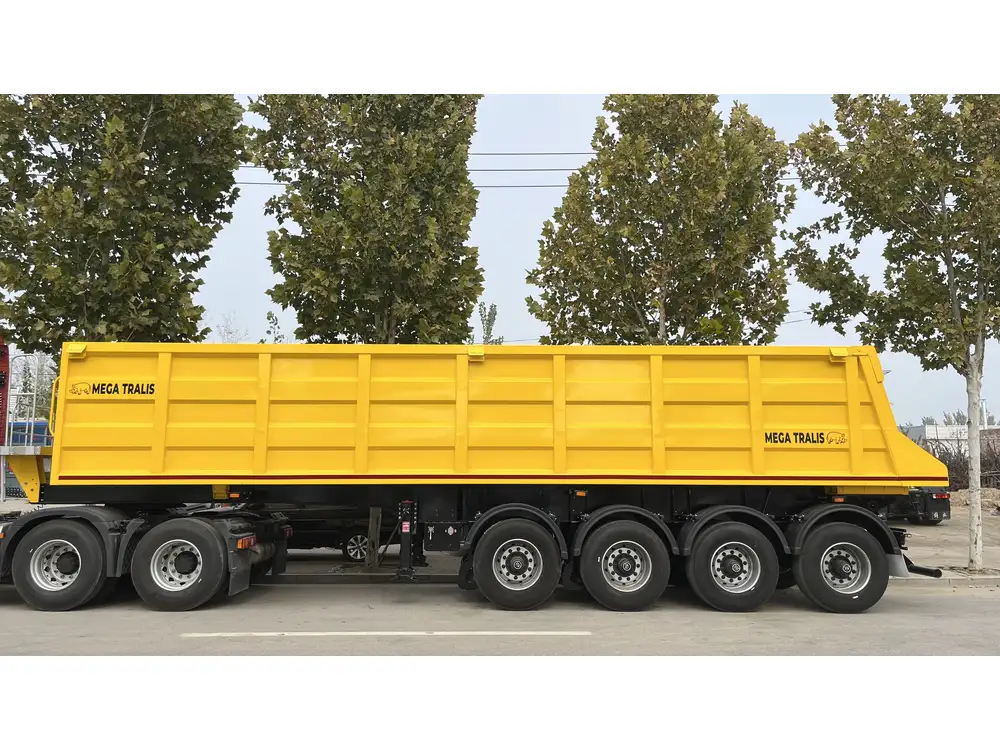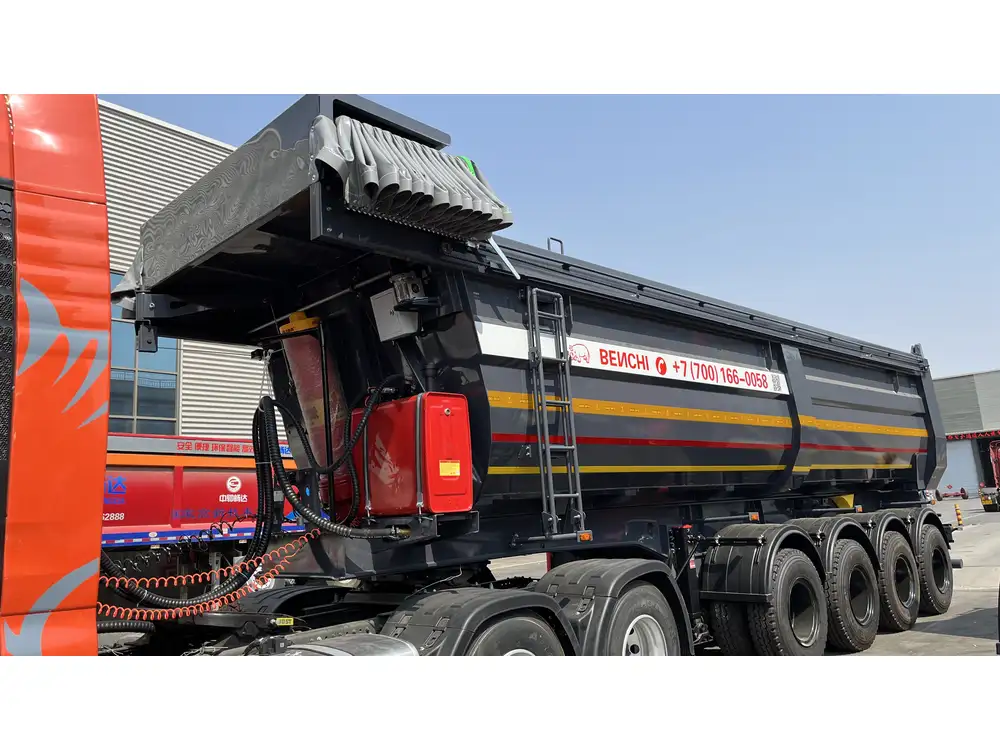When considering the trucking industry, especially in logistics and freight transportation, understanding the weight of semi-trucks is crucial. This weight not only influences regulations, fuel efficiency, and payload capacity but also has implications for road safety and overall operational costs. In this comprehensive guide, we dive deep into the specifics of semi-truck weights, detailing how much a semi weighs without its trailer, exploring factors that affect this weight, and providing insights that can help fleet operators, logistics managers, and trucking enthusiasts alike.
What Constitutes the Weight of a Semi?
A semi-truck, commonly referred to as a tractor or simply a semi, is a large vehicle typically composed of two main parts: the tractor and the trailer. The weight of the semi-truck can be categorized into different types, namely:
- Curb Weight: The total weight of the vehicle with all fluids, but without cargo or passengers.
- Gross Vehicle Weight Rating (GVWR): The maximum combined weight of a vehicle plus its load as specified by the manufacturer.
- Payload Capacity: How much weight the semi can carry in addition to its own weight.
Typical Weights of Semi-Trucks
Average Curb Weight:
- Most semi-trucks without their trailers weigh between 10,000 to 20,000 pounds (approximately 4,500 to 9,000 kg).
- The weight can vary due to several factors such as the model, engine size, and additional equipment.
Power and Configuration:
- Heavy-duty semi-trucks equipped with larger engines and more advanced technology may weigh more, pushing their curb weight to around 20,000 pounds (9,072 kg) or more.
Specific Models:
- Common models like the Freightliner Cascadia, Peterbilt 579, and Kenworth W990 fall into these weight categories, with specifications available via the manufacturers’ resources.

Comparative Insights
| Model | Estimated Curb Weight (lbs) | Engine Horsepower | Weight Distribution (Front/Rear) |
|---|---|---|---|
| Freightliner Cascadia | 16,000 – 19,000 | 400 – 600 | 12,000 / 8,000 |
| Kenworth W990 | 18,500 – 22,000 | 450 – 600 | 14,000 / 8,500 |
| Peterbilt 579 | 15,000 – 19,500 | 500 – 600 | 12,500 / 8,000 |
Factors Influencing Truck Weight Without Trailer
There are several crucial factors that affect the weight of semi-trucks when detached from their trailers:
1. Sub-Models and Build Specifications
Different manufacturers have varying performance standards and specifications. Models designed for heavy-duty tasks often incorporate elements that increase their weight.

2. Engine Type and Capacity
The engine type—diesel, natural gas, or electric—and its horsepower significantly affect the truck’s total weight. Diesel engines generally weigh more due to their robust design compared to lighter alternatives.
3. Cab and Body Design
The materials used in manufacturing the cab and body can drastically alter weight. Aluminum frames are lighter compared to steel, impacting overall curb weight.
4. Add-On Features
Custom features such as integrated technology for safety and efficiency, larger fuel tanks, and specialized equipment can contribute to increased weight. Fleet operators should consider which features are necessary for their operations and how they impact overall weight.

Legal Implications and Regulations
Understanding the legal implications of weight is critical in the trucking industry:
- DOT Regulations: The Department of Transportation (DOT) establishes weight limits for vehicles traveling on highways. For a standard semi-truck, the legal weight limit without added trailers typically should not exceed 80,000 pounds (36,287 kg) when fully loaded (including the trailer).
- State Regulations: Each state may have specific rules regarding the weight of trucks, especially in terms of axle weight limits. It’s vital for fleet operators to familiarize themselves with these regulations to avoid fines and ensure compliance.
Cruising Dynamics: Fuel Efficiency and Semi Weight
The weight of a semi-truck also directly correlates with its fuel efficiency. Heavier trucks consume more fuel due to:
- Increased Resistance: Heavier vehicles produce increased rolling resistance and require more energy to travel.
- Momentum Stamina: Weight determines how momentum is maintained during travel, affecting speed and fuel economy during accelleration and deceleration.
Strategies for optimizing weight and improving fuel economy include:
- Regular Maintenance: Keeping the vehicle in optimal condition ensures effective weight distribution and fuel efficiency.
- Equipment Management: Utilizing lighter materials in the truck’s construction or reducing excess equipment can enhance performance without sacrificing necessary features.
Assessing Payload Capability: How Much Can You Haul?
One of the pivotal considerations for operators is the payload capability of their semi-trucks:
Determining Payload Capacity:
- Traditionally calculated by subtracting the truck’s curb weight from its GVWR.
- For instance, if a truck has a GVWR of 80,000 pounds and a curb weight of 18,000 pounds, the payload capacity would be 62,000 pounds.
Payload Distribution:
- It is essential to distribute payload evenly across the axles to conform to legal limitations and ensure safety on the road.
- Improper distribution can lead to accidents, excessive wear on tires, and increased fuel consumption.

Real-World Applications and Considerations
Case Study: Fleet Optimization
A logistics company operating a fleet of semi-trucks, confronted with rising operational costs, investigated the benefits of reducing their fleet’s weight:
- Implementing Lightweight Components: By transitioning to newer models with aluminum frames and smaller engines, they reduced the average empty weight of their fleet by 1,000 pounds.
- Financial Impact:
- Fuel savings of about 15% annually.
- Enhanced payload capability led to an additional 5,000 pounds of cargo per trip.
This investment not only promoted sustainability but also boosted profitability through improved efficiency.
Seasonal Considerations and Weight Management
Understanding seasonal effects on trucking business and how weight can fluctuate is vital. For instance:
- Winter Months: Ice and snow add extra weight to the truck and trailer due to additional fluids for de-icing and winter preparations.
- Peak Shipping Seasons: During busy seasons, ensuring the trucks operate at optimal weight reduces delays and increases customer satisfaction.

Conclusion: Navigating the World of Semi-Truck Weights
In conclusion, the weight of a semi-truck without its trailer is a multifaceted topic that encompasses various elements, ranging from the design and build specifications to legal implications and operational efficiencies. As trucking operators, understanding these factors not only aids in compliance with regulations but also enhances operational success and profitability.
Key Takeaways:
- Average Weight: A semi-truck without a trailer typically weighs between 10,000 to 20,000 pounds.
- Influential Factors: Engine type, build specifications, and additional equipment can significantly alter weight.
- Operational Efficiencies: Managing weight effectively can lead to enhanced fuel economy and increased payload capacity.
This knowledge, when properly applied, empowers stakeholders in the trucking industry to make informed decisions about fleet management, potential investments, and operational efficiencies that affect the bottom line. Establishing a proactive strategy that considers weight implications can pave the way for sustained success in an ever-evolving market.



